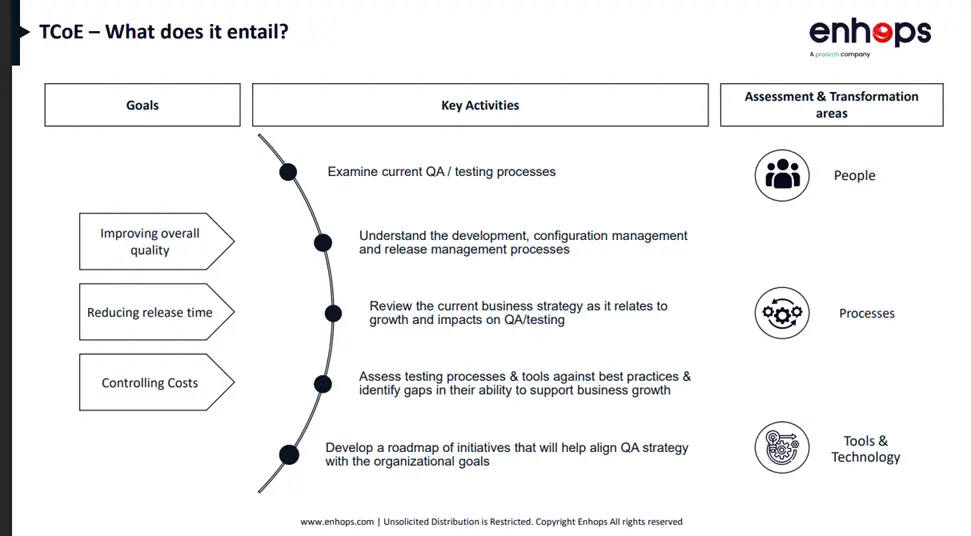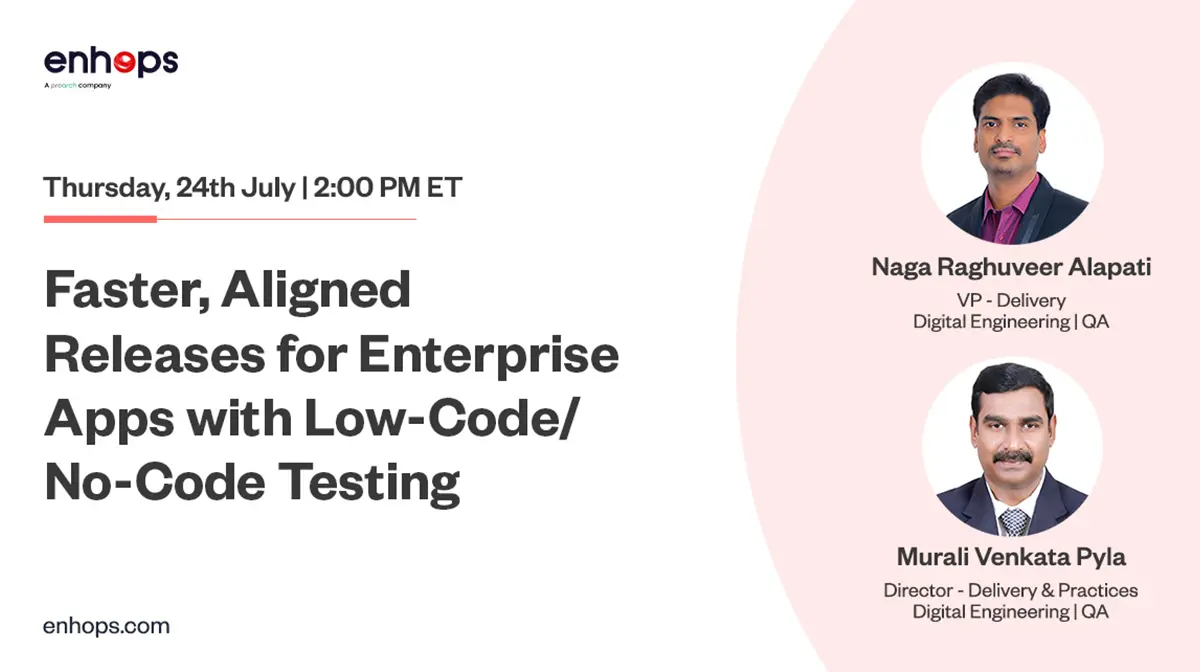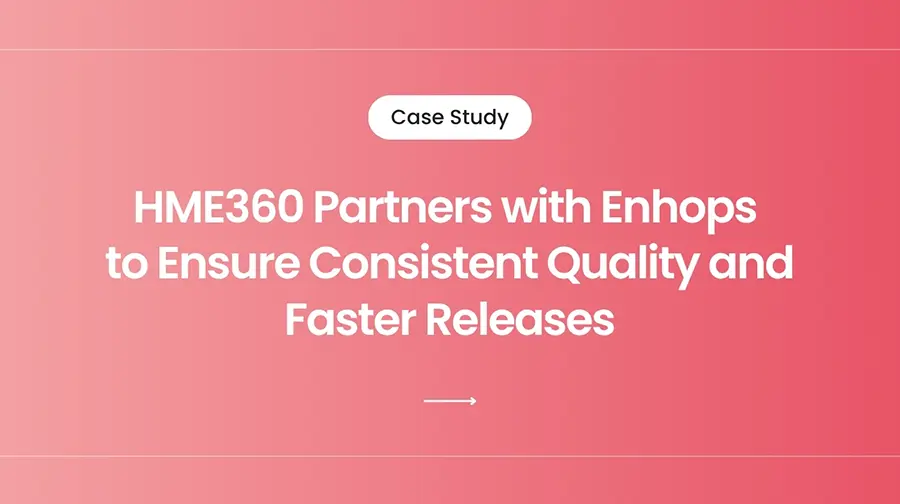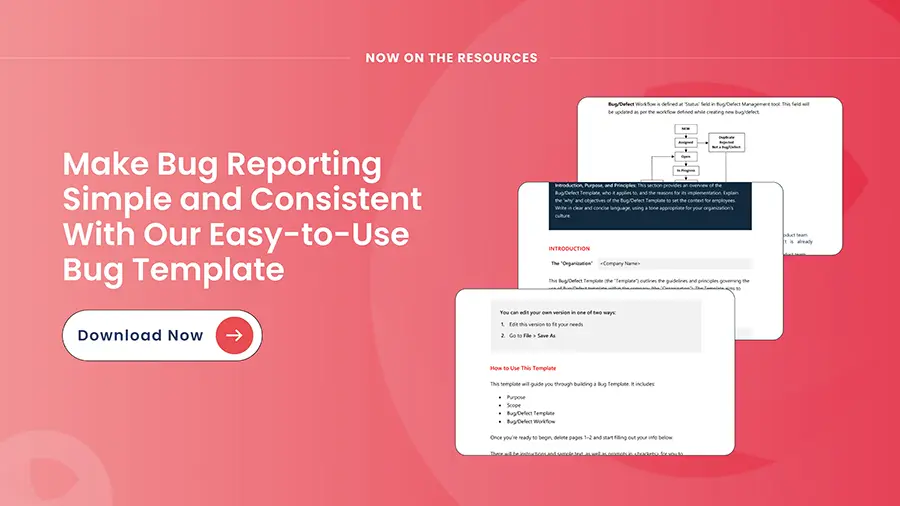In many organizations, testing evolves organically — and that’s where the problems start. Multiple teams often operate with different tools, inconsistent processes, and frameworks. As the delivery cycle accelerates, there’s little time left to maintain these scattered testing processes.
When issues arise in production, it’s not because testers missed something – it’s because there’s no unified, scalable system guiding how testing should be done.
The result? Delayed bug identification, inconsistent quality, and higher production defects and more time spent on remediation instead of innovation and new feature development.
To address this, forward looking organizations are shifting from siloed QA practices to a centralized quality strategy – through a well defined Testing Center of Excellence (TCoE).
In this blog, we are breaking down our conversation with Murali Pyla, our Delivery and Practices Director, to understand what, why, and how of building a Testing Center of Excellence.
What is a Testing Center of Excellence (TCoE)?
A TCoE is not just a team or toolset. It’s a centralized governance and quality framework that defines, standardizes, and evolves testing across all projects.
It QA aligns with business goals, delivery timelines, and compliance needs.
In short:
A TCoE transforms testing from a project activity into a strategic business function that drives efficiency, visibility, and innovation.
Who Needs a TCoE and Why?
- Large or complex IT environments that need standardized testing across platforms, tools, and teams
- Regulated industries like healthcare, finance, or aerospace where compliance and quality are critical
- Innovation-focused companies modernizing their QA strategy with automation and advanced tooling
- Organizations with frequent releases that need scalable, efficient QA without slowing delivery
- Global or distributed teams seeking consistency and coordination in testing practices
- Businesses aiming to cut QA time and efforts by streamlining tools, resources, and infrastructure
Learn how to reduce testing time by involving business users and using reusable, visual test components.
Why Build a Testing Center of Excellence?
A well-structured TCoE delivers measurable business and quality outcomes:
- Standardization Across Teams: TCoE replaces siloed testing efforts with unified methods, reusable templates, shared repositories and consistent workflows – one of the testing center of excellence best practices.
- Sustainable Automation: Introduces structured, scalable frameworks and CI/CD-aligned automation strategies that deliver real ROI.
- Knowledge Retention: Builds organizational QA intelligence through playbooks, centralized assets, and continuous upskilling.
- Quality Visibility: Tracks meaningful metrics like defect leakage, coverage, and test effectiveness to support better release decisions.

TCoE Governance Framework:
Behind every successful TCoE is a well-defined governance and improvement framework that ensures long-term impact.
Key components of a successful testing center of excellence strategy include:
- Executive Leadership & Steering Committees for goal alignment, funding, and ROI oversight
- Delivery & Process Management to drive incremental releases, manage risks, and adapt to change
- Unified Communication Across QA, Dev, and Business Teams, including offshore and distributed groups
- Audits, Quality Gates & Compliance Frameworks to uphold standards and support regulatory requirements
- Continuous Improvement Loops driven by metrics, retrospectives, and maturity assessments
Organize and execute tests with confidence
Step-by-Step Roadmap to Build a TCoE
If you’re wondering “how do I build a Testing Center of Excellence?”, here’s a proven roadmap Enhops uses with enterprise clients:
- Define Vision and Objectives – Outline clear quality and business objectives, such as improving test coverage, streamlining best practices, enhancing quality assurance practices, reducing product time to market, and lowering overall testing costs.
- Assess Current State – Conduct a thorough analysis of the organization’s current testing programs, skillsets, number of testing professionals, testing tools, challenges, inefficiencies, and overall quality issues.
- Design Governance Structure – Develop a governance framework that defines the organizational structure, roles, responsibilities, and reporting relationships within the TCoE.
- Implement Best Practices and Tools – Adopt testing center of excellence best practices including shift-left testing, test data management, automation frameworks, and scalable tooling.
- Build Team and Skills – Build a strong team of manual and automation engineers with expertise in testing and test automation while fostering a culture of collaboration, learning, and continuous improvement within the TCoE.
- Establish Metrics and Measurement – Create benchmarks and targets for quality, test coverage, defect detection rates, and relevant metrics.
- Promote Adoption and Engagement Engage with project teams, development teams, and business units to promote adopting TCoE practices and methodologies.
- Continuous Improvement – Establish continuous quality assurance feedback loops and ensure multiple checkpoints to understand the common pain areas and how to resolve them.
A TCoE is not a side project. It’s a long-term quality foundation. You need the right structure — and the right intent — to make it stick.
— Murali Pyla, Director – Delivery and Practices at Enhops
Case Study: How We Helped an Energy Leader Advance Their CMMI Level with Testing Center of Excellence
A global energy leader partnered with Enhops to modernize their QA practices and implement test automation. Their existing QA setup lack standardization and relied heavily on manual testing, which made it difficult to scale or demonstrate process maturity during audits.
Enhops established a Testing Center of Excellence integrated with a Test Automation First Framework using open-source tools like Selenium, RestAssured, and Jenkins for CI/CD.
This approach brought:
- Standardized test processes across teams
- Unified reporting and reusable assets
- Faster releases with improved quality metrics
We didn’t just want to patch up the issues. Our goal was to create a testing ecosystem capable of scaling with their ambitions.
— Murali Pyla, Director – Delivery and Practices at Enhops
As a result, the client successfully progressed from CMMI Level 2 to Level 3, with the TCoE and automation framework playing a key role in demonstrating capability, process discipline, and consistent execution across QA initiatives.
Building a TCoE That Drives Business Outcomes
At Enhops, we help global enterprises design and launch TCoEs as part of our Quality Assurance engagements that bring order, consistency, room for innovation, and maturity to QA practices.
Whether you need to align QA across business units, adopt automation at scale or improve audit readiness – we will help you to design and implement a Testing Center of Excellence strategy tailored to your delivery model, compliance needs, and growth goals.
Listen to the full conversation with Murali Pyla for more insights, or Book a meeting to connect with our TCoE experts.




